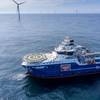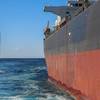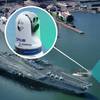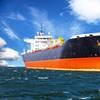Navy Research Vessel Launched with Siemens Propulsion
February 22 marked the launch of Neil Armstrong, the first of two Navy oceanographic research vessels to be launched with Siemens Blue multi-drive low voltage system. Neil Armstrong was launched in Anacortes, Washington.
Siemens said the use of Siemens Blue improves the vessels reliability due to failsafe features that help the vessel owner lower maintenance costs, increase efficiency and improve operational ease for the vessel and crew. The ship’s advance design decreases fuel consumption, resulting in reduced emission of harmful greenhouse gases.
Siemens provided the main generators, main propulsion and thruster motors, switchboards, power management system and automation system for alarm, monitoring and control functions. In addition, Siemens provided condition-based monitoring systems for improved maintenance and reliability.
“The launch of this vessel demonstrates a true solutions-based success story with Dakota Creek and design firm, Guido Perla & Associates,” said Doug Keith, president, Drive Technologies division, Siemens Industry. “The vessels will lead the way in technology and innovation in the scientific marine community.”
The vessels are approximately 238 feet long with the ability to stay at sea for up to 40 days. Each vessel will operate with 20 crew members and up to 24 scientists. The ship incorporates the latest technologies including high-efficiency diesel engines, emissions controls for stack gasses, new information technology tools for both monitoring shipboard systems and communicating with the world and state of the art acoustic equipment for mapping the deepest part of the ocean.
Delivery is scheduled for late 2014 for Neil Armstrong which will be operated by the Woods Hole Oceanographic Institution. The second vessel, Sally Ride, is set for delivery in early 2015 and will be managed by the Scripps Institution of Oceanography.
usa.siemens.com












